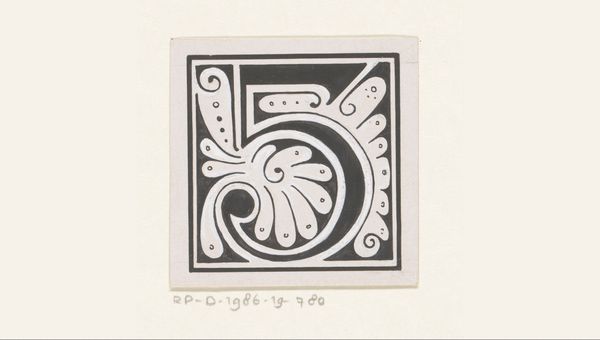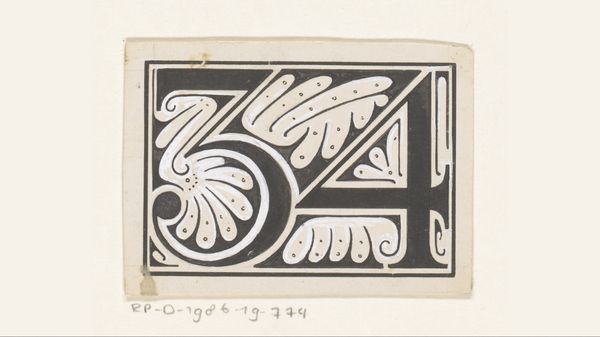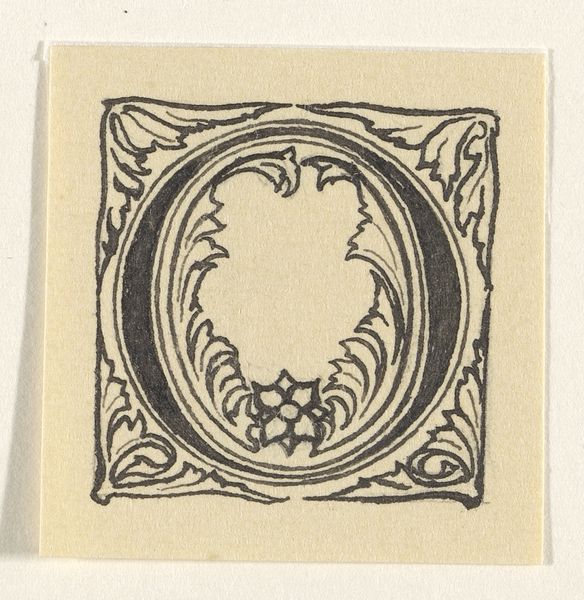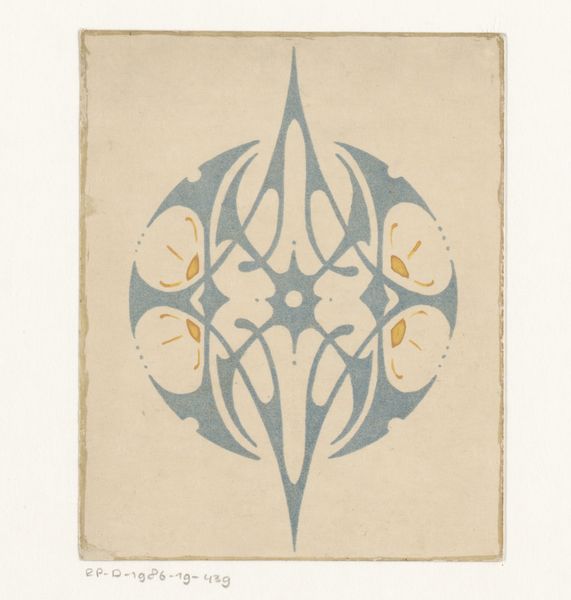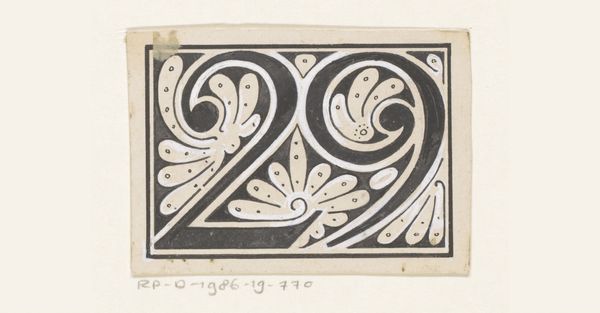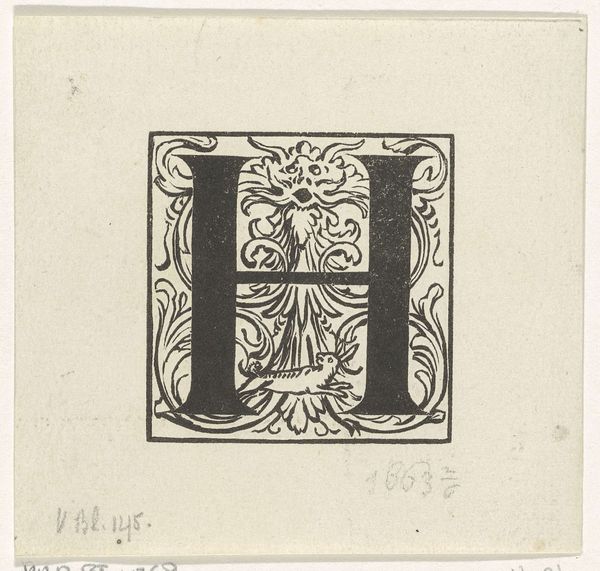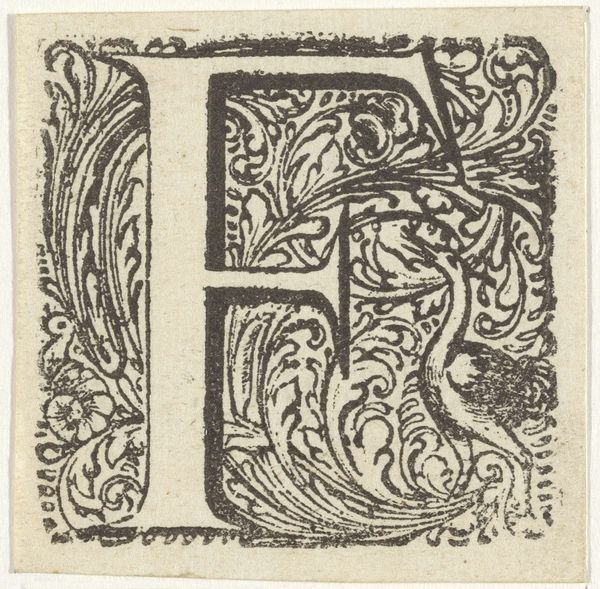
graphic-art, typography
#
graphic-art
#
art-nouveau
#
typography
#
geometric
#
decorative-art
Dimensions: height 50 mm, width 49 mm
Copyright: Rijks Museum: Open Domain
Curator: Immediately, I think this piece hums with quiet confidence; the monochrome palette enhances the geometric play of its Art Nouveau spirit. Editor: This is 'Getal 19,' a graphic piece from 1904 by Reinier Willem Petrus de Vries. He employs a clean, minimalist typography for this graphic design, primarily working in monochrome, in the graphic arts style. Curator: The choice to foreground the number nineteen strikes me as significant. Nineteen, historically, has represented completion, and sometimes judgement. But consider it further: within numerological contexts, one is new beginnings, nine is culminations… does nineteen bridge something? Editor: Interesting! I see the material making of the "nineteen" as part of its design function. Typography, during the rise of mass production at the turn of the century, becomes this fascinating crossroads of artisanal craft and industrial reproducibility. How was this image designed for production: woodcut? Metal type? That shapes our understanding. Curator: Look closely at the flourish of its lines and the balanced symmetry! Notice that the '1' side has stylized buds rising from a tender plant, while the ‘9’ contains a swirling, fecund flower! This evokes potent cycles, seasons, new growth out of winter—and a possible nod to feminine symbolism as well, if one thinks of that swelling nine. Editor: That's astute; yet look at those dots patterning the curves: almost like rivets! A clear indication of the way graphic design embraces, incorporates, and then sells forward, motifs found in then-modern industrialized products! Curator: In the end, 'Getal 19' captures an elusive balance between order and nature, representation and abstraction, past and future, doesn't it? Editor: Precisely. It’s about showing us that artistic practice, no matter the apparent subject, emerges always from the meeting place of aesthetic concerns, labor conditions, available material, and intended social purposes.
Comments
No comments
Be the first to comment and join the conversation on the ultimate creative platform.
